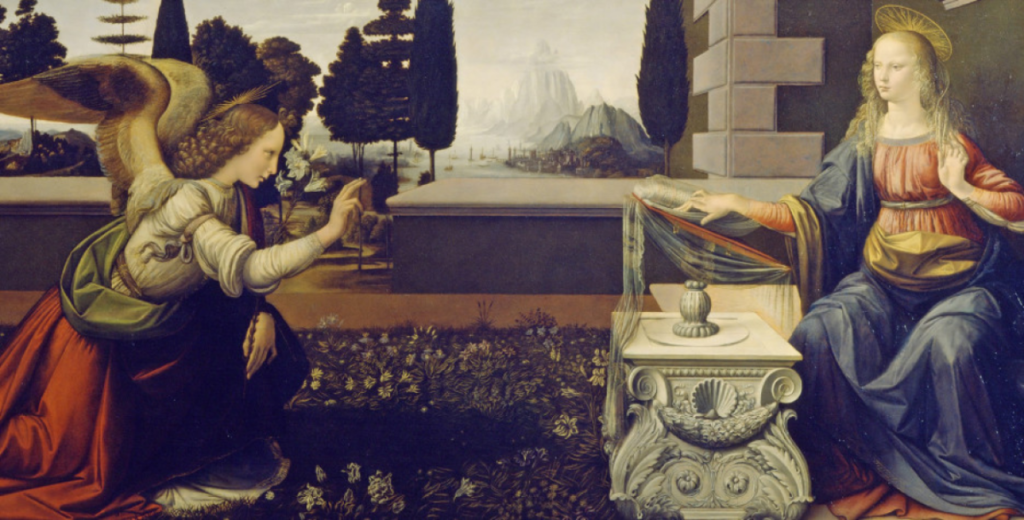This day celebrates the visit of the Archangel Gabriel to the Virgin Mary to announce to her that she would become the mother of Jesus.
As this effectively makes it the day on which Jesus was conceived, March 25th was chosen as the feast day as it is exactly nine months before Jesus was born on Christmas Day (December 25th).
In reality, Jesus probably wasn’t born on December 25th but after this date was accepted as Christmas Day by the church then the date for the Feast of the Annunciation was settled and the festival has been celebrated since at least the 5th century AD.
Greek Orthodox Christians refer to this day as the Annunciation of the Theotokos (the Greek name for Mary) and March 25th is Independence Day in Greece. Key uprisings against the Ottoman Empire took place in Greece at the end of March 1821, and March 25th was chosen as Independence day because of that date also being the Feast of the Annunciation.
In England and other parts of Europe, the Feast of the Annunciation is commonly called Lady Day, derived from ‘Our Lady’s Day’. This name derivation was taken one step further in Sweden, where the common pronunciation of ‘Our Lady’s Day’ is ‘Vaffledagen’, which became ‘Waffle Day‘, and it is now a Swedish tradition to eat waffles on March 25th.
While there are differences in how Muslims and Christians define the nature of Jesus, both religions share the belief in the announcement by Gabriel to Mary that she would be the mother of Jesus. Therefore the Feast of the Annunciation has been a national holiday in Lebanon since it was declared a Christian and Muslim holiday in 2010.
The Virgin Mary appears more often in the Qur’an than in the Bible. The Annunciation by the Angel to Mary is narrated both in the Gospel and in the Qur’an. Mary is mentioned by name in the Qur’an 34 times (while Mary’s name appears in the Gospels 19 times).
